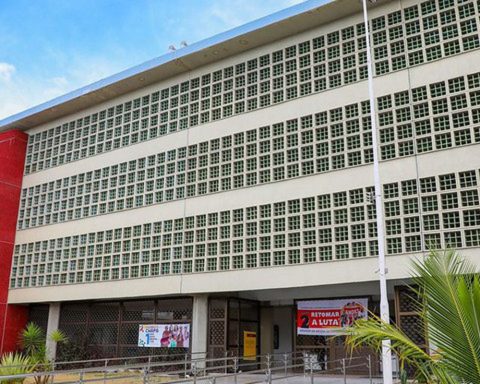The Foreign Trade Indicator (Icomex), released today (14) by the Getulio Vargas Foundation (FGV), points out that the Brazilian trade balance recorded, last year, the largest surplus in the historical series, in the amount of US$ 61.2 billion , US$ 10.8 billion more than the 2020 balance.
The trade flow, which includes exports plus imports, reached a record US$ 500 billion, as a result of the 34.2% increase in exports and 38.2% in imports in 2021, compared to the previous year. According to the FGV, the variation in prices, which rose 29.3%, contributed to the increase in exports, while the volume grew by only 3.2%. As for imports, the volume grew 21.9% and prices increased 13.1%.
Commodity exports (agricultural and mineral products traded abroad) accounted for 67.7% of total exports, showing an expansion of 37.3% in value. Prices had an increase of 38.9%, against a decline in volume of 1.8%. Exports of non-commodities grew 28.1%, as a result of higher prices (12.4%) and volume (13.5%).
Likewise, commodity imports increased their share in the basket from 7% to 8.5%, from 2020 to 2021. This increase was associated with a 69.5% variation in value, with an increase in prices of 36 .4% and in volume 23%. In the case of non-commodities, which accounted for 91.5% of Brazil’s foreign purchases, the change in value was 35.8%, with an increase in volume of 22% and in prices of 11.1%.
According to FGV’s Icomex, a new wave of increase in commodity prices in the international market is not expected, although this year shows a scenario of uncertainties due to the effects of drought and rain in some crops, the slower pace of growth of China and a possible intensification of the use of subsidies in some countries, such as the United States, in relation to the beef market. Domestically, there is also a concern about the exchange rate variation in the election year.
Industry
By type of industry, Brazilian foreign trade registered an increase, in value, of 62.7% in mining and quarrying industry exports, explained by the increase in prices (59.7%) and volume (1.3%). The industry’s share of total exports rose from 23% to 28% from 2020 to 2021. Iron ore and crude oil accounted for 94% of the sector’s total foreign sales last year. The two products had variations, in value, of 73% and 55.3%, respectively.
Icomex indicates that the second largest change in value was in the manufacturing industry (26%), with a 51% share of total national exports in 2021, revealing a drop of 4 percentage points compared to 2020.
The price index increased by 17.8% and the volume index by 6.5%, between 2020 and 2021. FGV highlighted that the list of industrial exports is more diversified than that of agriculture and the extractive industry. The ten main products sold in the international market explained 46% of the sector’s foreign sales, being mostly products that can be classified as commodities.
On the other hand, agriculture registered expansion of 23.6% in value and 27.2% in prices, with a decrease of 1.8% in volume. Its share was 20% of total Brazilian exports. Soybeans led, accounting for 70% of sales in the sector and showing an increase of 35.3% in value, followed by coffee, with a 10.5% share and an increase of 16.7%.
On the import side, the ten main products make up 36% of foreign purchases and the three – fertilizers, fuel oils and medicines – accounted for 16.7%. The manufacturing industry participated with 91.5% of imports and registered an increase of 34.6% in value, 11.7% in prices and 20.3% in volume, between 2020 and 2021. The extractive industry participated with 6% in total imports, with increases of 89.8% in value, 43.2% in volume and 31.6% in prices. The main imported products were liquefied natural gas (LNG) and crude petroleum oil. Highlight for the increase in value of 298% of gas imports, the result of a variation of 108% in price and 91% in volume. Agriculture accounted for 2.5% of total imports, with positive changes of 30.7% (value), 22% (prices) and 7.2% (volume). The main imported product was wheat, with a share of 31% and growth of 24.3%.
Composition
FGV’s Icomex shows that there were no changes in the composition of the Brazilian agenda. The agriculture and livestock and extractive sectors recorded positive balances of US$ 46.6 billion and 62.8 billion, respectively, while the manufacturing industry had a negative balance of US$ 45.3 billion. “The dependence on primary commodities to generate surpluses makes foreign trade more subject to price fluctuations”, analyzes the document.
destinations
China continues to lead Brazilian exports and imports. Although its share of exports declined from 32.4% to 31.3%, in 2021 compared to 2020, exports to the Chinese market increased by 29.4%. Imports also grew in value (45.2%), with price increases of 9.9% and 22.5% in volume. The surplus rose from US$ 33 billion to US$ 40.1 billion.
On the other hand, the trade deficit with the United States, Brazil’s second largest partner, increased from US$ 6.4 billion to US$ 8.3 billion. For Argentina, the surplus of US$ 591 million registered in 2020 gave way to a deficit, in 2021, of US$ 69.9 million.
Icomex also points out that, led by China, Asia confirmed its leadership in Brazilian foreign trade. The region’s share of the country’s exports, excluding China, reached 15.1%, surpassing that of the European Union (13%). In imports, the share was 12.2%, lower than the 17.4% share of the European Union.


















